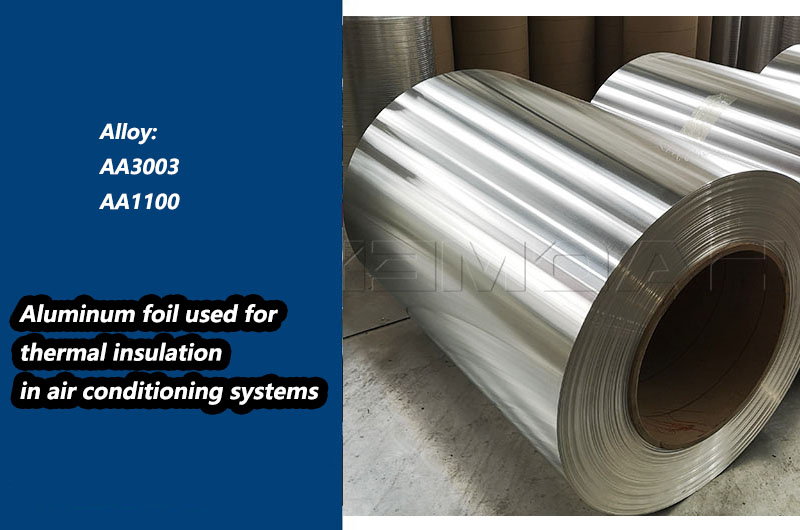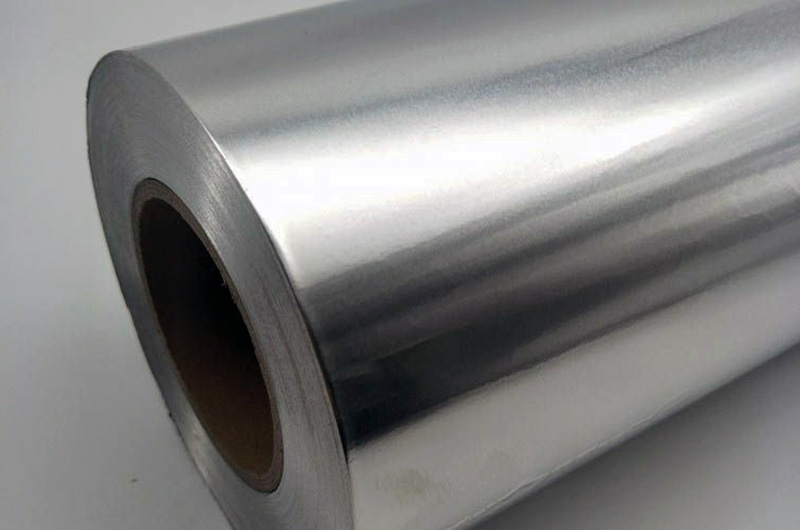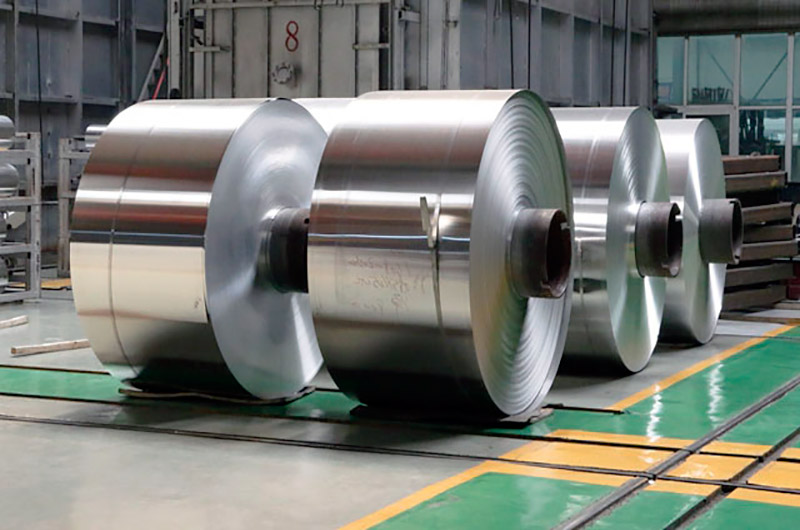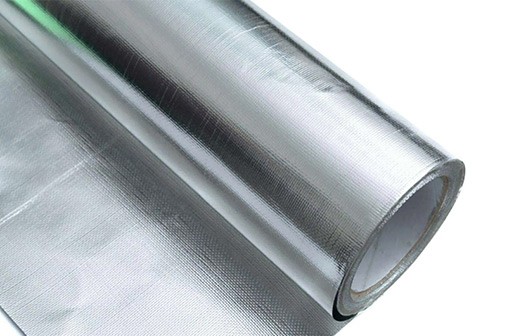- Understanding the Role of Thermal Insulation in Air Conditioning
- Aluminum Foil as a Thermal Insulator
- Applications of Aluminum Foil in Air Conditioning Systems
- Benefits of Aluminum Foil in Air Conditioning Thermal Insulation
- Conclusion
Air conditioning systems play a pivotal role in maintaining comfortable indoor environments, and one crucial aspect of their efficiency is thermal insulation. Among the various materials employed for insulation, aluminum foil stands out for its exceptional reflective and heat-resistant properties.
Understanding the Role of Thermal Insulation in Air Conditioning
Thermal insulation in air conditioning systems is essential for several reasons. It primarily aims to minimize the transfer of heat between the conditioned space and the external environment. Without effective insulation, air conditioning systems would have to work harder to maintain desired temperatures, leading to increased energy consumption, higher utility bills, and decreased overall efficiency.

Aluminum Foil as a Thermal Insulator
Reflective Properties
One of the key attributes that make aluminum foil an ideal choice for thermal insulation is its high reflectivity. Aluminum has a reflective surface that efficiently bounces back radiant heat, preventing it from penetrating the insulated area. This property is particularly advantageous in air conditioning systems where radiant heat transfer can be a significant factor influencing overall performance.
Heat Resistance
Aluminum foil is inherently heat-resistant, allowing it to withstand elevated temperatures without compromising its structural integrity. This heat resistance is crucial in air conditioning systems, where components such as ducts, pipes, and insulation materials may be exposed to varying temperatures during operation. The ability of aluminum foil to maintain its properties under such conditions enhances its longevity and performance.
Applications of Aluminum Foil in Air Conditioning Systems
Alloy Selection
Aluminum foil used in air conditioning systems is typically made from specific alloys that offer a balance of strength, flexibility, and thermal conductivity. The most commonly used alloys include AA3003 and AA1100. These alloys provide the necessary characteristics for effective thermal insulation while being cost-effective and readily available in the market.
Wrapping Ducts and Pipes
One prominent application of aluminum foil in air conditioning systems is wrapping ducts and pipes. Ducts and pipes are integral components of HVAC systems, responsible for transporting conditioned air or fluids. By wrapping these components with aluminum foil, the transfer of heat through conduction is minimized. This ensures that the air or fluids inside the ducts and pipes maintain their desired temperature, contributing to energy efficiency.
Insulating Panels
Aluminum foil is often integrated into insulating panels designed for air conditioning systems. These panels typically comprise layers of different materials, with an outer layer of reflective aluminum foil. This design combines the insulating properties of materials like foam or fiberglass with the reflective capabilities of aluminum foil, creating a comprehensive solution for minimizing heat transfer.
Bubble Wrap with Aluminum Foil
In certain applications, a combination of bubble wrap and aluminum foil is employed for thermal insulation. Bubble wrap provides additional insulation through trapped air pockets, while the aluminum foil on the outer layer reflects radiant heat. This lightweight and easy-to-install combination enhance the overall insulation performance, making it suitable for various air conditioning system components.
Flexible Duct Insulation
Flexible ducts are commonly used in HVAC systems for their versatility and ease of installation. These ducts may come equipped with an outer layer of aluminum foil to provide thermal insulation. The foil covering acts as a barrier, preventing external heat from affecting the temperature of the air being transported within the ducts. This application is particularly important in maintaining the efficiency of the air conditioning system.
Air Conditioner Insulation
In both residential and commercial air conditioning units, aluminum foil is used for exterior insulation. This application helps in preventing the penetration of external heat and sunlight, which can adversely impact the efficiency of the unit. The reflective nature of aluminum foil contributes to maintaining optimal operating temperatures and ensures that conditioned air is delivered effectively.

Benefits of Aluminum Foil in Air Conditioning Thermal Insulation
Energy Efficiency
The primary benefit of using aluminum foil in air conditioning systems is the enhancement of energy efficiency. By reducing heat transfer through reflective properties, aluminum foil allows the system to operate more efficiently. This results in lower energy consumption, reduced operational costs, and a smaller environmental footprint.
Durability
Aluminum foil is known for its durability and resistance to wear and tear. When used in air conditioning systems, it contributes to the longevity of insulation materials and system components. This durability ensures that the insulation remains effective over time, providing long-term benefits in terms of energy savings and system performance.
Lightweight and Easy Installation
Aluminum foil is lightweight, making it easy to handle and install in various components of air conditioning systems. Whether wrapping ducts, insulating panels, or covering flexible ducts, the ease of installation is a practical advantage that contributes to the efficiency of the overall installation process.
Resistance to Corrosion
Aluminum has natural resistance to corrosion, making it an excellent choice for applications in air conditioning systems. Exposure to varying environmental conditions, including humidity and temperature fluctuations, does not compromise the integrity of the aluminum foil. This resistance to corrosion ensures that the thermal insulation remains effective and reliable over the system's lifespan.
Cost-Effectiveness
The cost-effectiveness of aluminum foil adds to its appeal as a thermal insulation material in air conditioning systems. Compared to some alternative materials, aluminum foil is relatively affordable, making it an economical choice for large-scale installations. This affordability does not compromise its performance, making it a cost-effective solution for achieving thermal insulation goals.
Conclusion
In conclusion, aluminum foil plays a crucial role in enhancing the thermal insulation of air conditioning systems. Its reflective properties, heat resistance, and durability make it a versatile material for various applications, from wrapping ducts and pipes to insulating panels and air conditioner units. The specific alloys used, such as AA3003 and AA1100, offer a balance of characteristics that contribute to the overall efficiency and longevity of the insulation.
As the demand for energy-efficient solutions continues to grow, the role of aluminum foil in air conditioning systems becomes increasingly significant. Its ability to mitigate heat transfer and improve overall performance aligns with the broader goals of sustainability and energy conservation. As technology advances and new materials emerge, aluminum foil remains a reliable and cost-effective choice for achieving optimal thermal insulation in air conditioning systems.
Informations you may be interested in:
- Which is better, hydrophilic aluminum foil or copper foil for air conditioners
- Hydrophilic aluminum foil vs non-hydrophilic aluminum foil
- Solutions to hydrophilic aluminum foil problems
- What is Hydrophilic Aluminum Foil?
- Hydrophilic aluminum foil performance indicators
- Factors Affecting the Hydrophilicity of Hydrophilic Aluminum Foil
- What components in air conditioning systems use aluminum foil?
- Can aluminum foil be used in outdoor air conditioning units?
- Comprehensive analysis of air conditioning aluminum foil: classification and applications
- What kind of material is air conditioning aluminum foil made of and what are its


